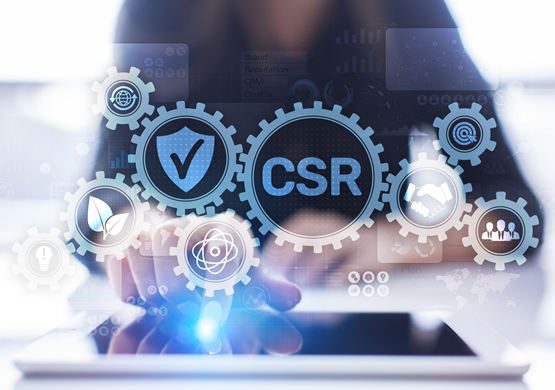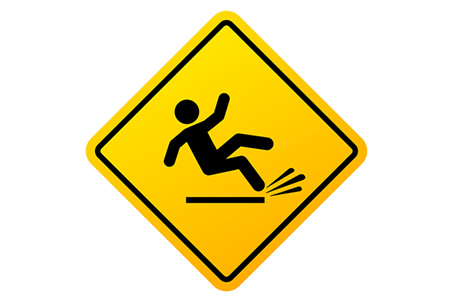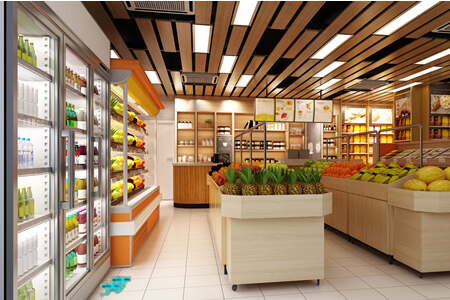Improve Health & Safety and Customer Experience through Technology
Health & Safety and Corporate Social Responsibility
The term Corporate Social Responsibility was officially coined in 1953 by American economist Howard Bowen (source). Increasing awareness of it has seen Corporate Social Responsibility become included within the annual report of most large enterprises. Driven by the influence of the big 4 accountancy firms since the early 90s, Corporate Social Responsibility is generally covered within the Corporate Governance Report and occupies a significant proportion of it.
Although viewed as voluntary and without legal mandate in the UK (source), companies are becoming ever mindful of the moral need to give something back to society, as otherwise they may be perceived as being socially irresponsible (source). Research has shown the enormous benefits, which can emanate from companies making their Corporate Social Responsibility (CSR) policies and activities known, through demonstrating that they ‘care’ about the people and environment they operate in (source). Particularly, when viewed through the lens of health and safety (H&S).
Health and Safety - a key goal of Corporate Social Responsibility?
CSR is one of the key vehicles used by corporations to demonstrate how caring they have been over a financial period, and how they intend to continue to be even more so during future periods (source). Anecdotal evidence suggests that one of the most effective means by which to do so is to provide a safe environment for employees and customers. A view supported by the Health & Safety Executive, which places the welfare of the key stakeholders in the business, especially employees, under the remit of Corporate Social Responsibility (source).
Health & Safety – Corporate Law
Corporate law tends to equate Corporate Social Responsibility as part of a directors’ fiduciary duty (source), which includes acting in the best interests of the company (source). This requires directors under the UK Companies Act 2006, when pursuing the interests of shareholders, to also consider the interests of employees, consumers and customers, along with suppliers and how their actions may impact upon the environment and communities (source). In other words, to balance the interests of all stakeholders whilst pursing business activities. However, less noted is that Corporate Social Responsibility can be a corporate obligation rather than merely part of directors’ fiduciary duty (source).
Health & Safety – Employees and Customer Experience
Occupational safety and health (OHS) therefore forms an integral part of CSR, which is confirmed by its inclusion in all the major measurement and reporting guidelines and tools developed for Corporate Social Responsibility. An important aspect of CSR is that it requires business, alongside its profit maximising function, to maximise its positive impact on society, which as a result places the emphasis upon businesses to go beyond what otherwise may just be basic compliance (source).
Anecdotal evidence suggests that numerous, large US retailers are extremely alive to and in tune with the positive benefits of Corporate Social Responsibility, with some openly declaring that they want to be the safest place to work and shop. As for the overall benefits potentially available to those retailers that embrace these principles, here are some stark facts:
- Slips, trips and falls are the second highest single cause of workplace injuries (source)
- 71% of slips, trips and falls are avoidable (source)
- Almost 50% of claims made against retailers are for slip, trip and fall cases (source)
- Cost to businesses >$10bn (source)
If the above facts and figures do not paint a clear enough business case for improving Corporate Social Responsibility, particularly when viewed from the perspective of the Health & Safety Executive, let’s consider what may appear to be rather an innocuous scenario. For example, whilst shopping in the fruit and vegetable aisle of their local supermarket a customer picks up a bunch of spring onions and through the process of bagging them, displaces a leaf, which ends up on the floor. The customer then continues with their shopping, but fails to pick up the leaf that they have dropped – worrying or not?
A couple of months ago, whilst shopping in my local supermarket and walking through the fruit and veg aisle I got a nasty surprise. I instantly lost my footing and was about to take a very nasty tumble onto a hard, tiled floor. Thankfully years of balancing on a snowboard saved me. I managed to recover without falling or sustaining an injury. The cause? A dropped spring onion leaf that had been trodden on and mulched, it was akin to stepping on ice. Why did I not see it, the leaf had simply been obscured by my shopping basket.
Now consider the potential outcome if that was encountered by an elderly person with a lack of extreme sports experience. Then, where does liability lie? In short, with the retailer, and if proven to be negligent by failing to deal with the hazard in a timely manner they also face criminal fines under the Health & Safety Act 1974, which cannot be mitigated by insurance. In addition to this, there is also the brand damage and fallout that occurs through the reporting of related issues in the press, which marketing have to deal with.
Now here is an Interesting fact. Customers dropping items and failing to report respective incidents was shown by research from the HSE to be one of 15 common, contributable and avoidable behavioural factors that cause trip and slip incidents (source).
Health & Safety Technology - AI and CSR
For those that view Corporate Social Responsibility as an opportunity to become the safest place to work and shop, can technology help them care and improve performance within?
Yes. Ocucon, in partnership with SeeChange, recently developed SpillDetect, a low cost AI software solution for H&S professionals that uses existing CCTV network infrastructure to mitigate risk and negate liability. SpillDetect delivers a world first for detecting and reporting liquid spills, including water and clear liquids. It also comes with full and comprehensive Health & Safety management software, which includes dashboard KPI reporting, so that organisations can benchmark performance across their network of outlets. SpillDetect allows organisations to improve CSR through taking pre-emptive action and mitigating the risk of slips and trips caused by liquid spills. We have also launched an OSHA Compliance Software solution, to detect obstructions to fire exits and critical emergency infrastructure, which comes based upon the same underlying system architecture as our ground-breaking spill detection solution.
In the age of big data and data driven decisions, Ocucon offers a unique range of Health & Safety Management Software solutions that release latent value from the immense amount of data captured by existing CCTV networks. They also provide a vivid demonstration of how technology and AI can help businesses ‘care’, by raising the bar in Corporate Social Responsibility to new levels, through providing safer places to work and shop.
Intelligent EHS Management Software – AI to eliminate Trip Hazards for H&S?
Ocucon, in partnership with SeeChange, are currently developing their unrivalled computer vision and reporting platform to encompass unusual object and hazard identification. This step will help to further address the causes of trips in key areas, in particular those aisles described by leading grocers as the most dangerous places to be, through tapping into the latent value of data captured by CCTV.
By taking a unique approach to EHS Management Software, we are helping a wide range of corporations increase the level of care that they provide for their employees, whilst improving the overall customer experience that they offer consumers. Through deploying revolutionary technology utilising the latest developments in AI driven software, we facilitate performance improvements in the key area of Corporate Social Responsibility.
If you are actively looking to tackle these challenges within your business, contact us now to discuss how you may become involved in a trial of our technology.






